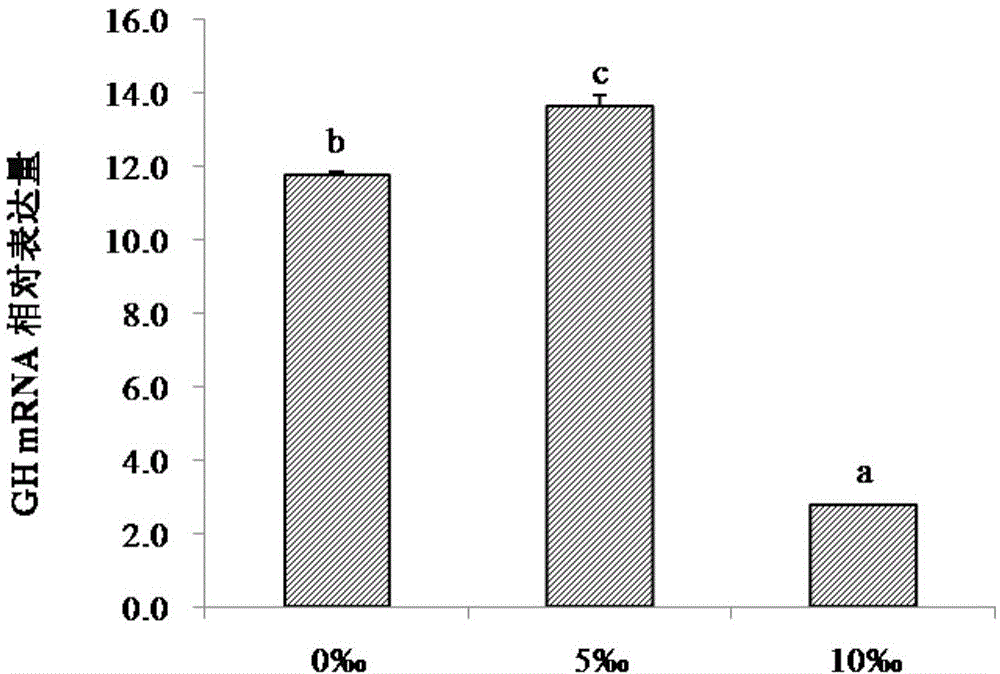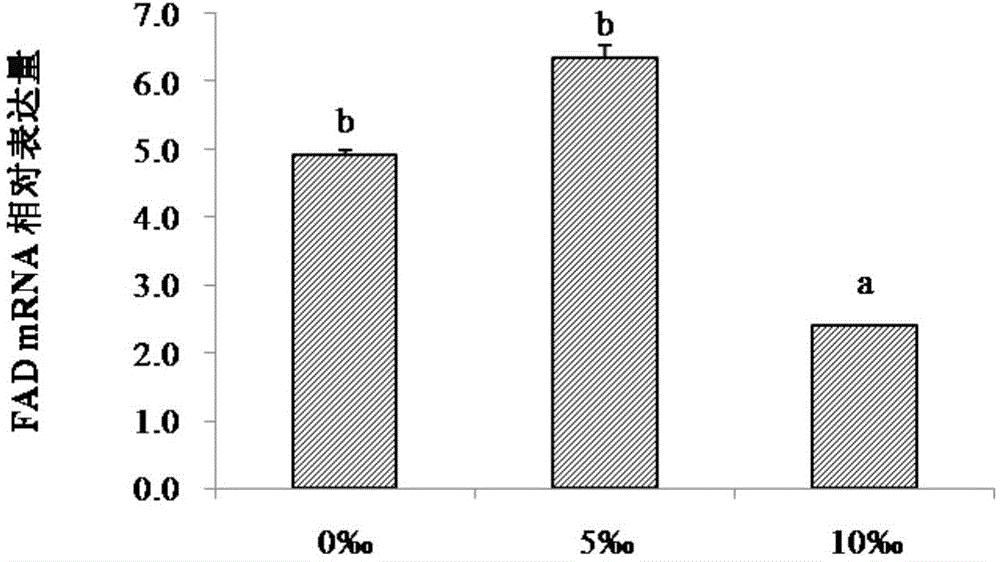Low-salinity cultivating method for siniperca scherzeri steindachner fries
A cultivation method and low-salinity technology, applied in the field of aquaculture, can solve the problems of easy disease and death of fry, large and high-quality freshwater resources, vertical infection of bacteria, etc., and achieve the effect of easy promotion, saving clean freshwater resources, and reducing disease infection.
- Summary
- Abstract
- Description
- Claims
- Application Information
AI Technical Summary
Problems solved by technology
Method used
Image
Examples
Embodiment 1
[0026] Implementation location: In the hatching shed of Dabao Fishery, Fengcheng City, Liaoning Province, the steps are as follows:
[0027] 1) Sources of fish fry and bait: Yalu River spotted mandarin fish fry are 5-day-old healthy fry after self-propagation and membrane rupture; bait fish bream fry are all 3-day-old healthy fry after self-propagation and membrane rupture; Artemia larvae are purchased from harvest years Eggs hatch.
[0028] 2) The aquarium (150cm×55cm×50cm) was disinfected with 10mg / L potassium permanganate solution before the test, rinsed, and then filled with fresh water.
[0029] 3) Release seedlings: choose healthy and uninjured spotted mandarin water flowers (1cm), and release 100 seedlings in each aquarium.
[0030] 4) Salinity adjustment: On the day of seedling release, gradually add natural brackish water (salinity greater than 5‰) to increase the salinity, and increase the salinity of the water body by 1‰ every day until the salinity reaches 5‰.
...
Embodiment 2
[0034] The method is the same as in Example 1, except that the salinity in the water is increased by 1‰ every day until the salinity reaches 10‰.
[0035] After 15 days of cultivation, the growth results of the spotted mandarin fish are shown in Table 1:
[0036]
[0037] Different letters represent significant differences, P<0.05.
[0038] It can be seen from the above results that if the salinity is increased by 1‰ every day, and the salinity is adjusted to 5‰, the growth of the spotted mandarin fish seedlings is the best, and the body weight and survival rate are the highest.
[0039] Use the Trizol method to extract the total RNA of the whole fish in Comparative Example and Examples 1 and 2, and use cDNA as a template after reverse transcription to analyze the expression of growth and metabolism-related genes by quantitative PCR. The relevant results are shown in the appendix Figure 1-6 . The gene expression pattern reflects the physiological state and regulation mec...
Embodiment 3
[0041] Implementation location: In the hatching shed of Dabao Fishing Farm, Fengcheng City, Liaoning Province, the experimental steps include:
[0042] 1) Sources of fish fry and bait: Yalu River spotted mandarin fish fry are 5-day-old healthy fry after self-propagation and membrane rupture; bait fish bream fry are all 3-day-old healthy fry after self-propagation and membrane rupture; Artemia larvae are purchased from harvest years Eggs hatch.
[0043] 2) The aquarium (150cm×55cm×50cm) was disinfected with 10mg / L potassium permanganate solution before the test, rinsed, and then filled with fresh water.
[0044] 3) Release seedlings: choose healthy and uninjured spotted mandarin water flowers (1cm), and release 100 seedlings in each aquarium.
[0045] 4) Salinity adjustment: On the day of seedling release, salt is gradually added to increase the salinity, and the salinity of the water body is increased by 1‰ every day until the salinity reaches 5‰.
[0046] 5) Feed feeding: D...
PUM
 Login to View More
Login to View More Abstract
Description
Claims
Application Information
 Login to View More
Login to View More - R&D
- Intellectual Property
- Life Sciences
- Materials
- Tech Scout
- Unparalleled Data Quality
- Higher Quality Content
- 60% Fewer Hallucinations
Browse by: Latest US Patents, China's latest patents, Technical Efficacy Thesaurus, Application Domain, Technology Topic, Popular Technical Reports.
© 2025 PatSnap. All rights reserved.Legal|Privacy policy|Modern Slavery Act Transparency Statement|Sitemap|About US| Contact US: help@patsnap.com



